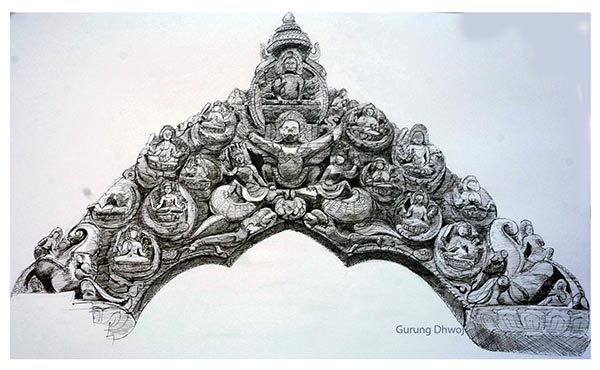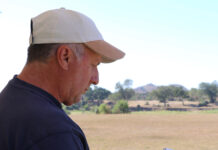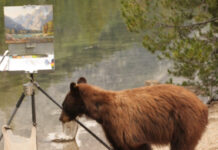Nepal was hit hard by an earthquake in April 2015, and an artist named Gurung Dhwoj has been at the center of the relief efforts. Along the way, he has scratched out some time to paint and sketch. Recently, his drawings have more urgency to them, as he realized that many wood carvings on buildings—a key element in the local culture—were not being restored or preserved amidst the great changes.
Lead Image: Gurung Dhwoj’s pen-and-ink drawing of a toran, a carving above the main entrance to a temple, in Nepal. 20 x 30 in.
“Because of so-called modernization and development, these carvings do not get much concern these days,” says Dhwoj. “This type of cultural heritage is disappearing, day by day. The remaining carvings are not well preserved. Through my outdoor work I would like to show how important our cultural heritage is to the local community. Young people and whoever comes by have a great time sharing about tudals and torans.”
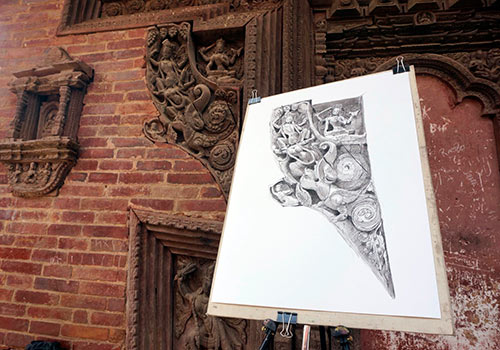
Dhwoj explained these two types of carving. “A toran is a part of a carving above the main entrance of the temples,” he says. “It will represent the main god or goddess of the temple, along with other elements. It has long been a very important part of Nepali architecture.”
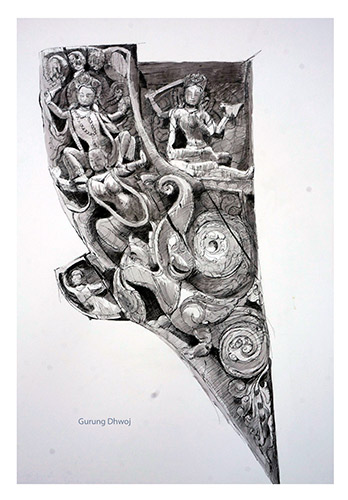
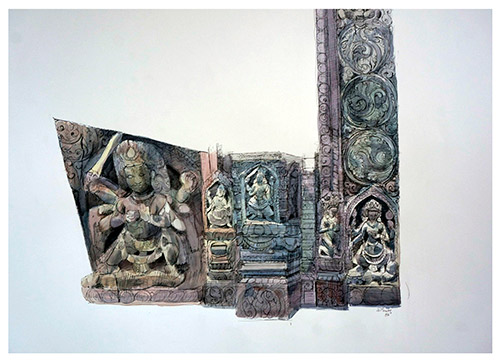
“A tudal is also a part of the temple, the part that supports its roof,” Dhwoj explains. “It is oriented in different directions, which implies different meanings. It is carved with the main god or goddess of the temple to help the visitor identify whose temple it is, along with some erotic sculpture. They are not just supporting the roof but also spreading a positive message in society.”
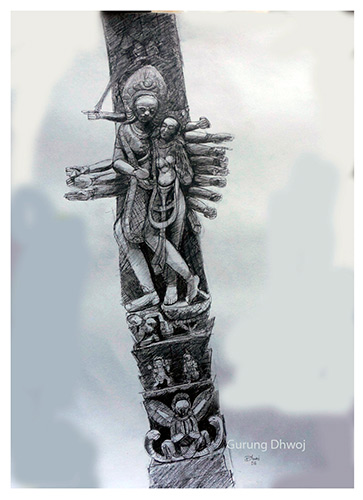
Dhwoj travels all over the Kathmandu Valley, working in and near the seven UNESCO World Heritage sites and the 150 culturally important monuments. “It’s a new experience for me, working outdoors for more than two days on the same location,” he says. “A lot of people enjoyed it so much while I was painting these torans and tudals, which have been part of our Nepali living heritage. Cities such as Bhaktapur, Patan, and Basantapur are well known for their carvings; they are like an open museum for visitors. I have met different types of people every day, and I feel like at least they will also care about these carvings in the future.”
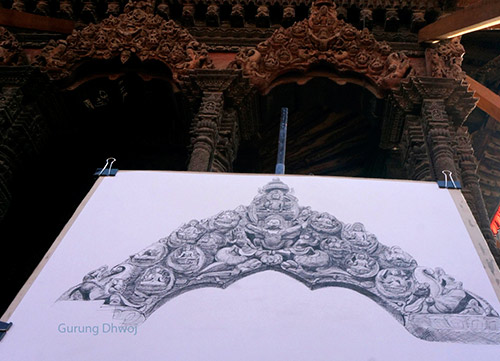
To see more of Dhwoj’s work, particularly his watercolors, go here. To help support the earthquake relief work in Nepal through the organization that Dhwoj serves, go here.

